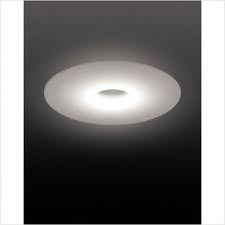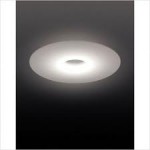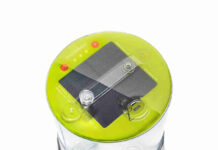
 Several city offices in St. Cloud, Minnesota are mounting special ceiling lights that are capable of transmitting data — via light waves — to desktop computers equipped with special sensors, reports AP.
Several city offices in St. Cloud, Minnesota are mounting special ceiling lights that are capable of transmitting data — via light waves — to desktop computers equipped with special sensors, reports AP.
The ceiling lights purportedly flicker faster than the eye can see, and transmit code to light sensors attached to the computers.
Visible Light with Embedded Communication “is a form of high-speed, very secure wireless data communication using visible light. Traditionally, wireless communication has been comprised of radio waves with their related electronic equipment. Examples of these are WI-FI, 3G Networks and Bluetooth. Without exception, they all require magnetic radio waves.
“Visible Light with Embedded Communication is comprised of light photons and can be seen by the human eye. Its related equipment is what looks like a standard lamp that generates its light from LEDs (Light Emitting Diodes or solid state lighting) rather than hot filaments or hot gasses like those used in today’s lamps. The difference is that the solid state LEDs ‘modulate’ so fast, that though the human eye can’t see this modulation, data information can be carried within this modulated signal, all while lighting your occupied area as traditional lights always have.”
LVX Systems Co, which is installing the system, explains on its website that light-waved based data transmission offers an alternative to congested radio-wave systems that we all today rely on. The LVX system can transmit data at about three megabits per second, about as fast as a residential DSL line. The light-emitting diodes (LEDs) housed in the standard-sized light fixture transmit coded binary messages to the special modems, which also respond via light waves.
Interestingly, the St. Cloud city government was mainly interested in the energy efficiency and savings offered by the LED lighting technology, and the network access capabilities were a secondary benefit, the AP article observes. Such smart lighting, LVX says, “can be managed by computers in ways that will save lamp energy from 30-80%. Our solid state lighting offers an intelligent lighting solution that can automatically illuminate areas when they become occupied and reduce lighting in areas that are unoccupied.”
At this time, no studies are available to measure the impact of rapidly flickering lights on the people working beneath them. Perhaps some future study down the road will show being bombarded with optical 1s and 0s will be a source of migraines and eyestrain? We will see. But the idea of moving at least some Internet access to light waves is a very compelling one.




Thanks a lot for the information . It is so useful
Gonna love those lost packets when somebody walks by your computer. Also, strobe lights. People need to stop trying to innovate by combining things that have no reason to be combined. What advantage does this offer? We already have internet distribution that passes through walls, is standardized and cheap. The bandwidth is only 3Mbs, that’s less than half of dated 802.11b wireless., and less than 1% of 802.11n If they, for some reason have horrible radio interference, just use cables.